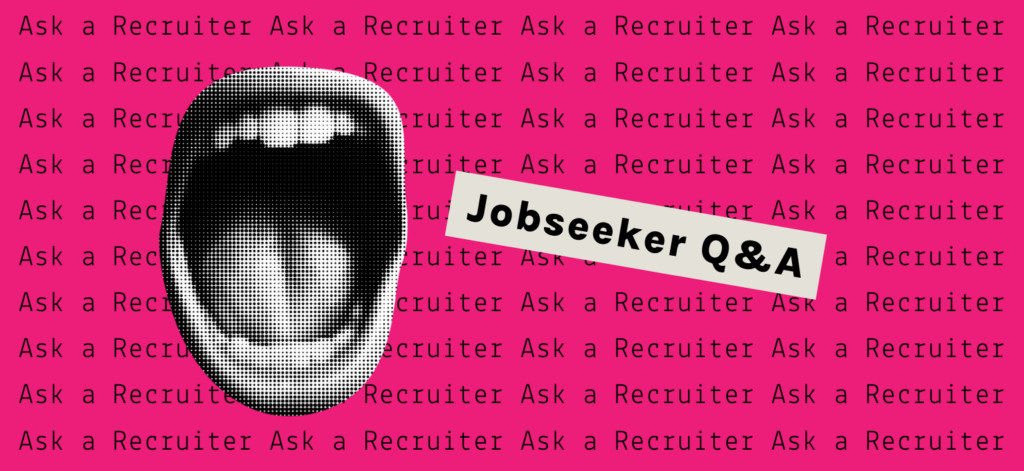Networking is one of my favorite, and most effective, career pursuits. I try to attend at least one new event every week. In the past networking felt like pulling teeth. That was before I knew the value of attending networking events.
Making the most out of networking events is where a lot of job seekers struggle. It can be hard to translate all of those business cards and handshakes into meaningful, lasting connections. That’s why I’ve gathered some tried and true networking tips that you can try out at your next conference, meet-up, or coffee chat. These are tips and tricks I’ve adapted from years of attending networking events, and interviewing career experts on my Find Your Dream Job podcast.
Step 1: Get Your Networking Strategy Ready
Set Goals
Before you sign up or buy tickets for any networking event, know what you want to accomplish. Have a clear idea of what you intend to gain at a conference before you arrive. Possible goals might include meeting potential employers, finding new vendors, or exploring ideas you want to take back to work. It’s important to note that not every networking opportunity will lead directly to a job offer, but by discovering Portland’s hidden job market, you may open the door to previously unknown opportunities.
Plan Ahead
Don’t wait until you’re at the registration table to come up with a game plan. Look at the event website in advance, especially the speaker and attendee lists. Often, conference organizers set up a Facebook or LinkedIn group for attendees. If so, make sure you’re involved in that group!
You’ll likely see the names of industry leaders, employers for whom you might want to work one day, or other professionals you’ve wanted to meet. Conferences offer an easy, informal way to do this. Setting priorities about who to see – or better yet setting up a coffee or lunch at the event — will help ensure you connect with the right people.
Step 2: Make The Most of the Event
Be Approachable
See someone standing alone? They will be secretly relieved when you walk up, introduce yourself, and start a conversation. Not sure about joining a small group? Look for friendly body language and casual conversation, good signals they are open to talking with others. Also be sure to keep your body language friendly and approachable. Don’t cross your arms, keep constantly checking your phone, or hunch your shoulders.
Get The Conversation Going
A simple hello, an exchange of names and handshakes, and a question about how someone came to be at the event are enough to break the ice. Then, follow up the conversation with open-ended questions to set a tone of ease. Ask about someone’s involvement in the sponsoring organization, connection to the host, or how far they’ve traveled to attend the event.
Tell Your Story
Introduce yourself to your new contacts, describe who you are, and what you’ve done. Your purpose is not to share your complete resume. Instead, help your listeners understand what you do so that they can suggest contacts or remember you when a job opening comes up.
Show Your Value
Does a conversation reveal common interests and make you think of relevant websites, articles, or other materials? Offer to pass along this information. This allows you to be a resource after you return to the office and gives a legitimate reason to exchange business cards.
Keep Unlocking New Connections
In my podcast conversation with career coach Tammy Gooler Loeb, Tammy recommended never leaving a room without having a few new contacts on your follow-up list:
“I always suggest that people try not to leave or complete any networking conversation without having at least one or two other names of people to follow up with from that conversation. Think about who you know and who they might know. That gives you a much farther reach.”
Step 3: Build Upon Your New Connections
Put Your Business Cards To Work
Don’t neglect the connections you made at a conference. When you return to the office, invite the people you met to connect with you on LinkedIn. Look for ways to stay in touch, and continue nurturing connections that will pay off in the long run.
Continue to Provide Value
Consider their needs and add value before asking for favors. No one likes to feel like they’re being used. Invest in the relationship before you try to draw from the account. Do your research about what the people in your network are doing and what they need. It could be as simple as forwarding an article or offering to make an introduction to someone new. Show the person why you’re a great contact to have in their network for the long-term.
Contributed by Mac Prichard, the founder and publisher of Mac’s List, where he writes regularly about job hunting, leads classes on job search skills, and hosts the “Find Your Dream Job“ podcast.




